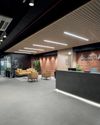
Building Information Modelling (BIM) is gaining increasing recognition globally not just as a transformative tool during the design and construction stages of building projects, but also as a vital resource in the maintenance and operations phase.
The insights into how BIM enables these advantages can be gleaned from a wide array of sources that showcase its versatile applications extending beyond construction. Utilising BIM throughout a building's lifecycle, spanning from the initial design phase to continuous maintenance, empowers the industry to unlock its complete potential in boosting efficiency, enhancing the effectiveness and accuracy of operational management, and extending the longevity of buildings for the future.
THE EVOLUTION OF BIM
The evolution of BIM signifies a fundamental change in the architecture, engineering, and construction (AEC) sectors. It marks a shift from conventional two-dimensional drafting to intricate multi-dimensional models.
The journey commenced in the 1970s with the introduction of computer-aided design (CAD) systems, establishing the foundation for digitally representing the physical and functional attributes of increasingly detailed building plans.
The 1980s and 1990s brought about more progress as technology became not only more widespread, but also more complex. The turning point emerged in the early 2000s with the advent of software capable of supporting intricate geometries and data-rich models. The evolution of BIM is defined by its increasing capacity to integrate and analyse vast volumes of data throughout various stages of the building lifecycle, from initial planning to demolition, fostering unparalleled collaboration among stakeholders.
This story is from the May 2024 edition of Commercial Design.
Start your 7-day Magzter GOLD free trial to access thousands of curated premium stories, and 9,000+ magazines and newspapers.
Already a subscriber ? Sign In
This story is from the May 2024 edition of Commercial Design.
Start your 7-day Magzter GOLD free trial to access thousands of curated premium stories, and 9,000+ magazines and newspapers.
Already a subscriber? Sign In

WORKING TOGETHER
Professor Louise Valentine, Head of the Design School at Heriot-Watt University, on the importance of inclusive design in the workplace

WHERE CREATIVITY WORKS
Alhad Gore of Beyond Design Architects & Consultants brings his architectural expertise to life in the new office for Atul Patel Architects, blending functionality with creative flair to craft a workspace that inspires innovation and collaboration

FACILITATE INTELLIGENCE
How AI is redefining the future of facility management

DESIGNING A BETTER FUTURE
How inclusive office designs are shaping the modern workspace

ADDED VALUE
Is a good project manager the secret to success for a complex commercial design project?

RECOGNISING EXCELLENCE ACROSS THE SPECTRUM
The Grand Jury Meet of the third edition of Commercial Design Awards, a cornerstone event in India’s commercial design landscape, unfolded amidst the awe-inspiring expanse of the Welspun Global Carpet Plant in Hyderabad.

A VISION FOR 'TOTAL BUSINESS ECOSYSTEMS'
Jitu Virwani, Chairman and Managing Director of Embassy Group, redefines India's commercial real estate landscape by pioneering integrated, future-ready, and sustainable business ecosystems.

AWFIS TO DESIGN, MANAGE 165K SQ FT OFFICE SPACE FOR NSE IN MUMBAI
Awfis Space Solutions Limited on Tuesday said it will design and manage 1.65 lakh square feet of office space in Mumbai for the National Stock Exchange.

MACROTECH ACQUIRES 2.8 ACRES IN HINJEWADI
Realty developer Lodha, listed as Macrotech Developers, has acquired a 2.8acre plot of land in Pune's Hinjewadi area from Paranjape Schemes.

EMBASSY OFFICE PARKS REIT APPOINTS RITWIK BHATTACHARJEE AS INTERIM CEO
Embassy Office Parks REIT on Thursday appointed Ritwik Bhattacharjee as its interim Chief Executive Officer (CEO) with immediate effect, following Sebi’s order to suspend its CEO Arvind Maiya.